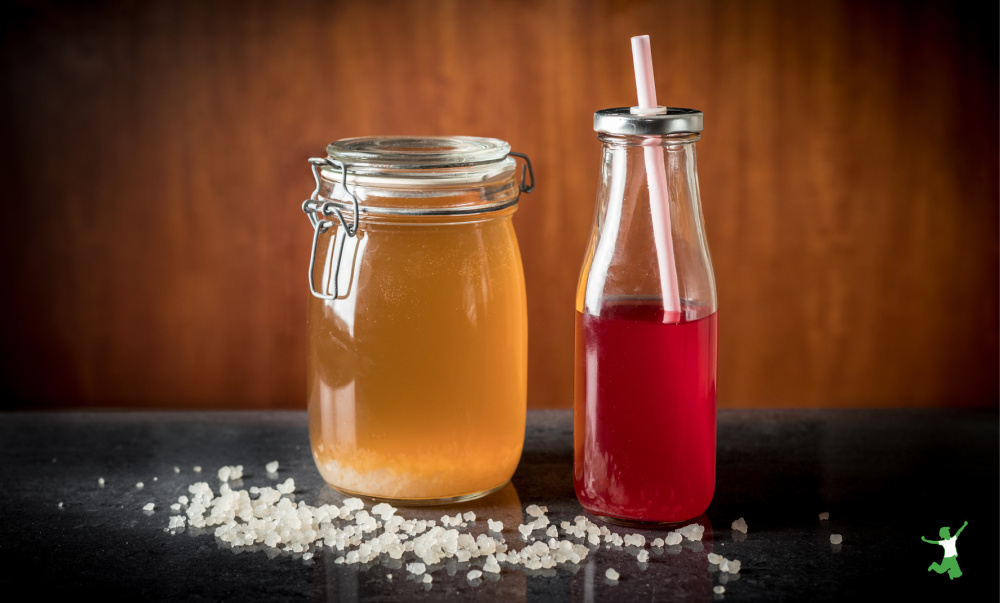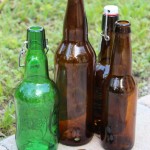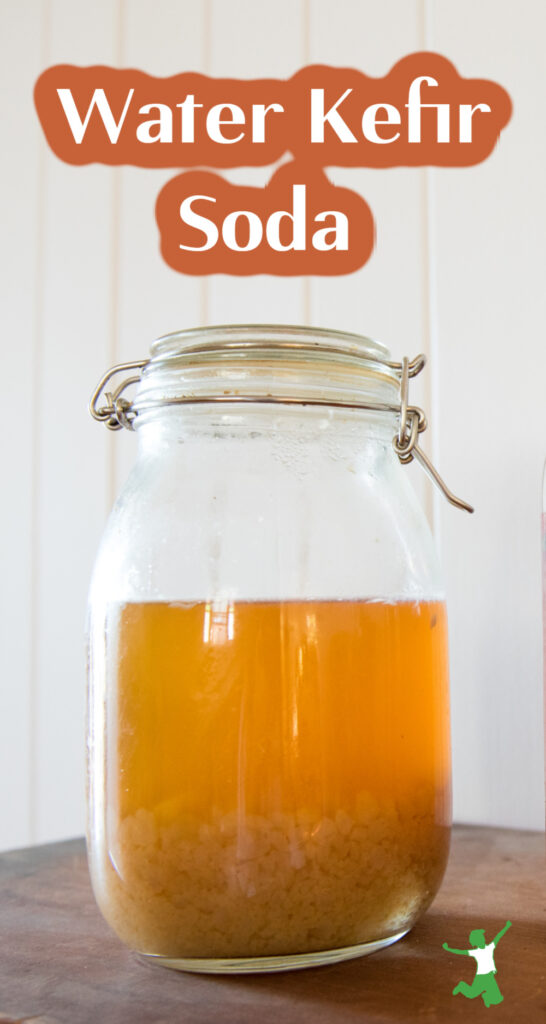How to make bubbly, fermented water kefir which is a traditional cultured beverage loaded with probiotics and enzymes. A healthy alternative to soda.

Many people are surprised to learn that soda is actually a traditional food! Of course, ancestral cultures did not sweeten fermented beverages artificially or add unhealthy chemicals and GMO sugar like today.
Water kefir is a very popular example of a healthy traditional beverage that is tasty, fizzy, satisfying and thirst-quenching without any of these additives.
Many people are familiar with homemade dairy milk kefir or coconut milk kefir. Be aware that a slightly different type of culture is used to make water kefir.
Water kefir grains look different than milk kefir grains. They also grow much faster, which is great because there is more to share with your friends!
The probiotic properties of water vs milk kefir grains vary quite a bit as well.
You should be able to procure some water kefir grains within your local community by asking your health-conscious friends or at farmers’ markets.
If you still cannot find some locally, you can order them from the vetted sources in my shopping guide.
If you wish additional flavor and fizz, be sure to bottle your homemade water kefir after it is finished culturing.

Homemade Water Kefir Recipe
Bubbly, homemade water kefir recipe that the whole family will enjoy to help kick the unhealthy soda habit once and for all!
Ingredients
- 1/4 cup water kefir grains
- 1 quart filtered water
- 1/4 cup sucanat
Instructions
-
Mix all the ingredients together in a mason jar leaving 1 inch at the top.
-
Screw on the lid and leave on the counter for 48 hours. Taste after 48 hours, and if it is too sweet, leave for another 24 hours. Taste again, if too sweet, leave another 24 hours. Repeat for up to 5 days until the a fermented, apple cider type flavor with minimal sweetness has been achieved.
-
Strain out the water kefir grains and refrigerate the liquid (no metal please), clean the mason jar, and repeat the process for a new batch of water kefir. You will have approximately double the kefir grains as they grow rapidly with each batch. You can give them away, eat them as a live probiotic, or make a larger batch of water kefir.
-
To add variety, you may also reduce the sugar to 1/8 cup, reduce the water to 3 cups, and add 1 cup of fresh fruit juice. Juice from the store is almost always pasteurized and as such, is not recommended as it significantly increases the risk of fermentation mold. Fresh juice has minimal mold issues when fermented and is much more nutritious, and is therefore best to use. If using fresh lemon or lime juice, keep the sugar at 1/4 cup and only use 1/2 cup fresh juice.
-
After fermenting, you may bottle the liquid to achieve extra fizz. This is an optional step. The picture with this step shows the types of bottles I use. Only fill the bottles to the bottom of the neck and leave on the counter for and additional 24-48 hours.

-
Chill well and open the bottles slowly over the sink as the level of carbonation is quite surprising!
-
To store your water kefir culture, place up to 1/2 cup water kefir grains in 1 quart of filtered water mixed with 1/4 cup sucanat, coconut sugar, or maple sugar and refrigerate until you are ready to use again.
Recipe Video
Recipe Notes
Maple sugar or coconut sugar may be substituted for the sucanat. Raw honey does not work as well in my experience.









I love your video. Thanks for sharing. I really want to try this. Wondering if any one has tried to make rootbeer?
Strain out the kefir grains with a non metal slotted spoon or small sieve.
do you strain it as you bottle or do the grains and all go into the bottle.
The grains and water can be right out of the refrigerator or room temperature. If you start the batch with cold water, it will take a few hours or even a day longer for the fermentation to take place.
What is the temperature of the water when you add the sugar and kefir grains?
Bonnie
Hi Rick, I have a couple ideas for you. First of all, where did you get the grains? Perhaps they were a bit weak to start with if they hadn't been used in awhile. The water kefir does not produce much effervescence which is why I show you how to bottle it if you like more. The color doesn't change much as you can see on the video, so brown and cloudy is not a problem unless the color did not change at all which can indicate weak grains. You may wish to try it with some fruit juice, vanilla or some of the other variations to produce more flavor.
Hey Sarah,
I tripled your recipe and after about 19 hours, there is no sweetness at all and the kefir is very brown and cloudy, almost no fizz and bland in flavor. The grain reproduced A LOT.
I used rapadura for the sugar.
Any advice?
Thanks
Rick
Holly, I make enough for 9 people everyday and what I do is I make 3 batches each consisting of 1/2 cup water kefir grains, 1/2 cup organic sugar, 1 tsp unsulfered black strap molasses and 1/8 tsp of Bobs Red Mill baking soda. My grains grow so fast that I have a whole nursery of them in the fridge. My kids and I love water kefir, really cold especially on a hot day after a long day of work in the garden.
Tricia, How much water do you use to make enough for the nine family members?
Hi Holly, yes – I usually make water kefir by the half gallon so just increase the amounts accordingly to match the size batch you desire to make. I am not sure if canning jars would work for carbonating the fermented water kefir. Give it a try and post back if it works. The sugar is fermented and used up by the culture just like with kombucha and other fermented beverages.
Hi Sarah!
Thanks for this video. Finally! I always wondered what water kefir was all about! I have three questions. Have you even made it in larger amounts? One little jar won't go far in my house : ) Can you bottle it in regular canning jars with screw tops when you extend the brew time? What happens to the sugar? Is it used up?